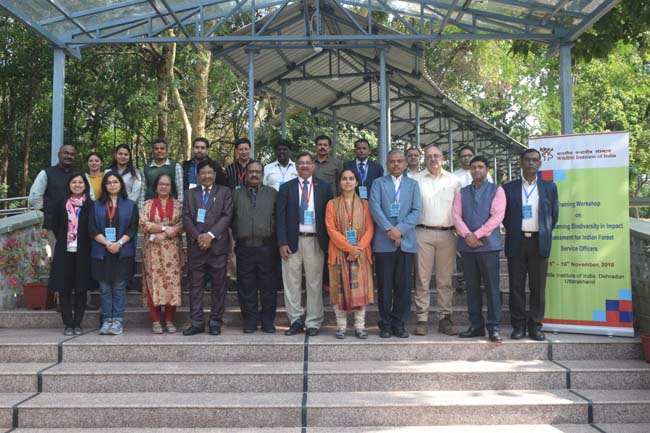Training Workshop on Mainstreaming Biodiversity in Impact Assessment for Indian Forest Service Officers (15th - 16th November 2018)
It is now becoming more widely accepted that the conservation of biodiversity is the responsibility of all sectors of society, and action is required and expected from governments, conservation organizations, business community and wider society.
Finding innovative ways to link biodiversity conservation with development and growth is crucial to helping biodiversity conservation efforts succeed for ethical, cultural and economic reasons. Tools for mainstreaming biodiversity in impact assessment and also in development decisions can help to exercise best development options with due recognition of the conservation goals for safeguarding threatened bio-resources and critical ecosystem goods and services.
Wildlife Institute of India organised a training programme on Mainstreaming Biodiversity in Impact Assessment for the officers of the Indian Forest Service sponsored by the Ministry of Environment, Forest and Climate Change (MoEF&CC), Government of India, New Delhi. This course was developed with the aim of improving the understanding of the mechanisms to mainstream biodiversity in the EIA framework for good reporting and sound decision making and to empower the natural resource managers for a careful review of proposals seeking diversion of forested areas for developments in economic sectors such as mineral extraction, dam building and linear alignments of roads and power grids through forested areas.
The objectives of the workshop were to (i) improve the mechanisms for mainstreaming biodiversity in impact assessment for sound decision making and long term gains for conservation; (ii) enhance understanding of the issues and conflicts related to role of impact assessment in meeting conservation and development goals vis-à-vis ground realities; and (iii) review options for professionalizing EIA for positive outcomes for biodiversity conservation.
Training inputs were given on integration of biodiversity in impact assessment; EIA framework and best practices for mitigating impacts on biodiversity; assessment of impacts on wildlife and impact mitigation of sectoral development including linear infrastructure, hydropower and powerlines; Best Practices for planning and implementing conservation solutions in transportation infrastructure development; cumulative assessment of hydropower development; conservation implications of development projects for large-landscape dependent species viz. tiger and elephant; and Strategic Environmental Assessment; A film on Impacts of Hydropower Development was also screened. A panel discussion on the ‘Role of Foresters in professionalizing EIA for biodiversity conservation’ was held for the participants. A total of eleven officers participated in the course.
 |
 |
Course objectives and target group |
 |
Feedback |
 |
List of participants |
 |
Training resource material |
 |
Photo gallery |
Last Updated: January 25, 2019









